Florence city center is a UNESCO World Heritage Site since 1982, and just strolling around
provides a full immersion in the heart of the Renaissance.
If you are considering visiting the main museums and the most famous palaces of the city, please keep in
mind
that Florence is a touristic attraction and full of tourists all year around.
We suggest you to plan your visits well in advance and book and buy tickets online as soon as possible to avoid long queues or denied access due to sold outs.
You can buy entrance tickets on the websites of the various museums/palaces (as shown below) or on the website of CAF Tours, the conference partner tourist agency: https://www.caftours.com/. CAF Tours offers entrance tickets, but also tours, guided visits and experiences.
The list here below might be used as a guide for choosing the attractions which most suits your taste.
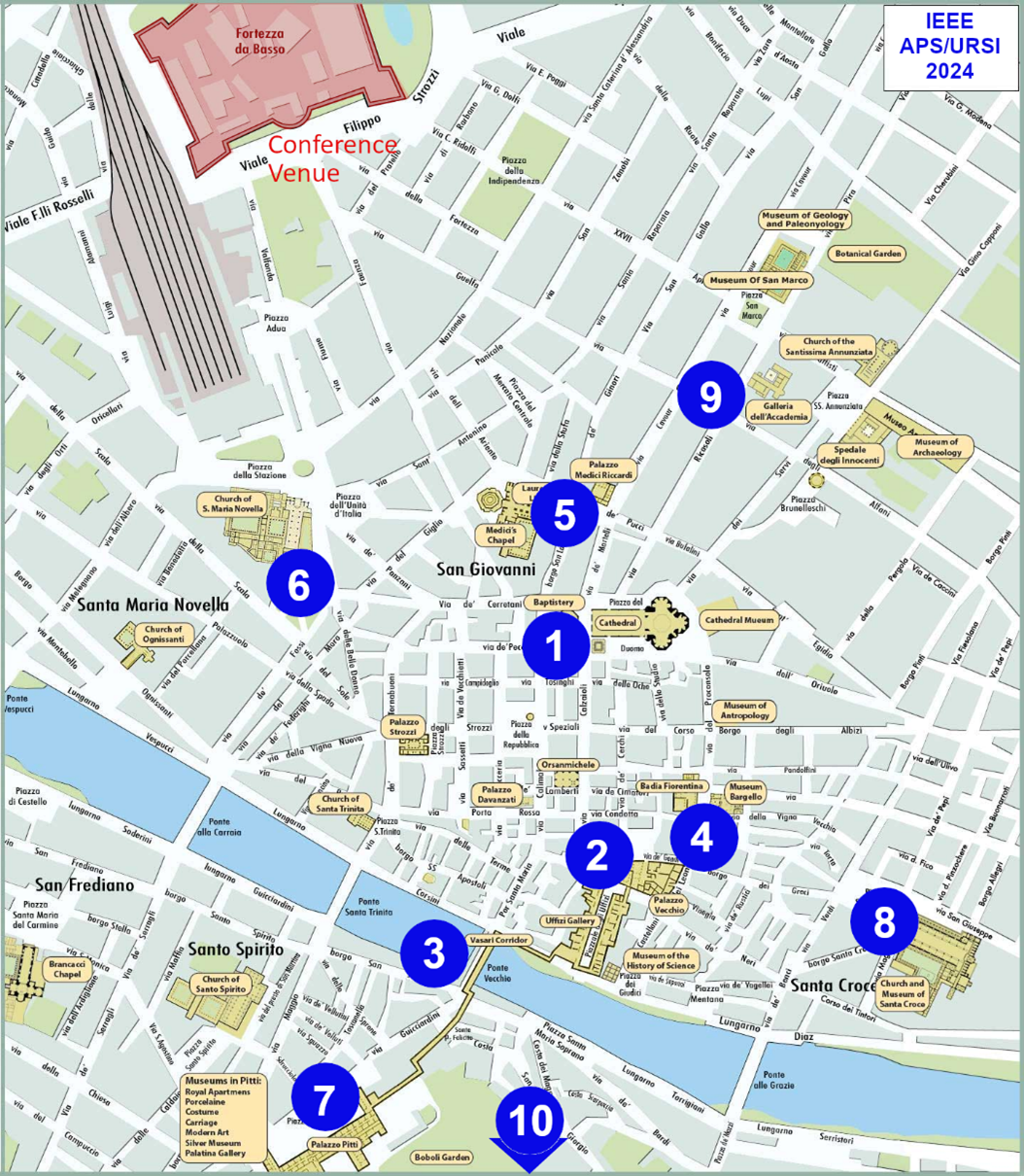
Piazza San Giovanni is the Cathedral square, hosting (at least) four relevant monuments:
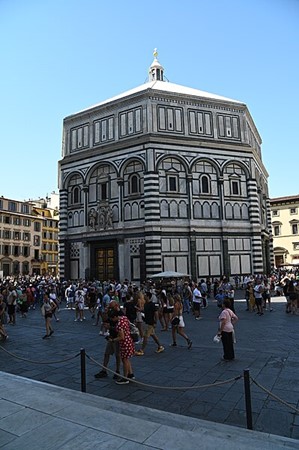

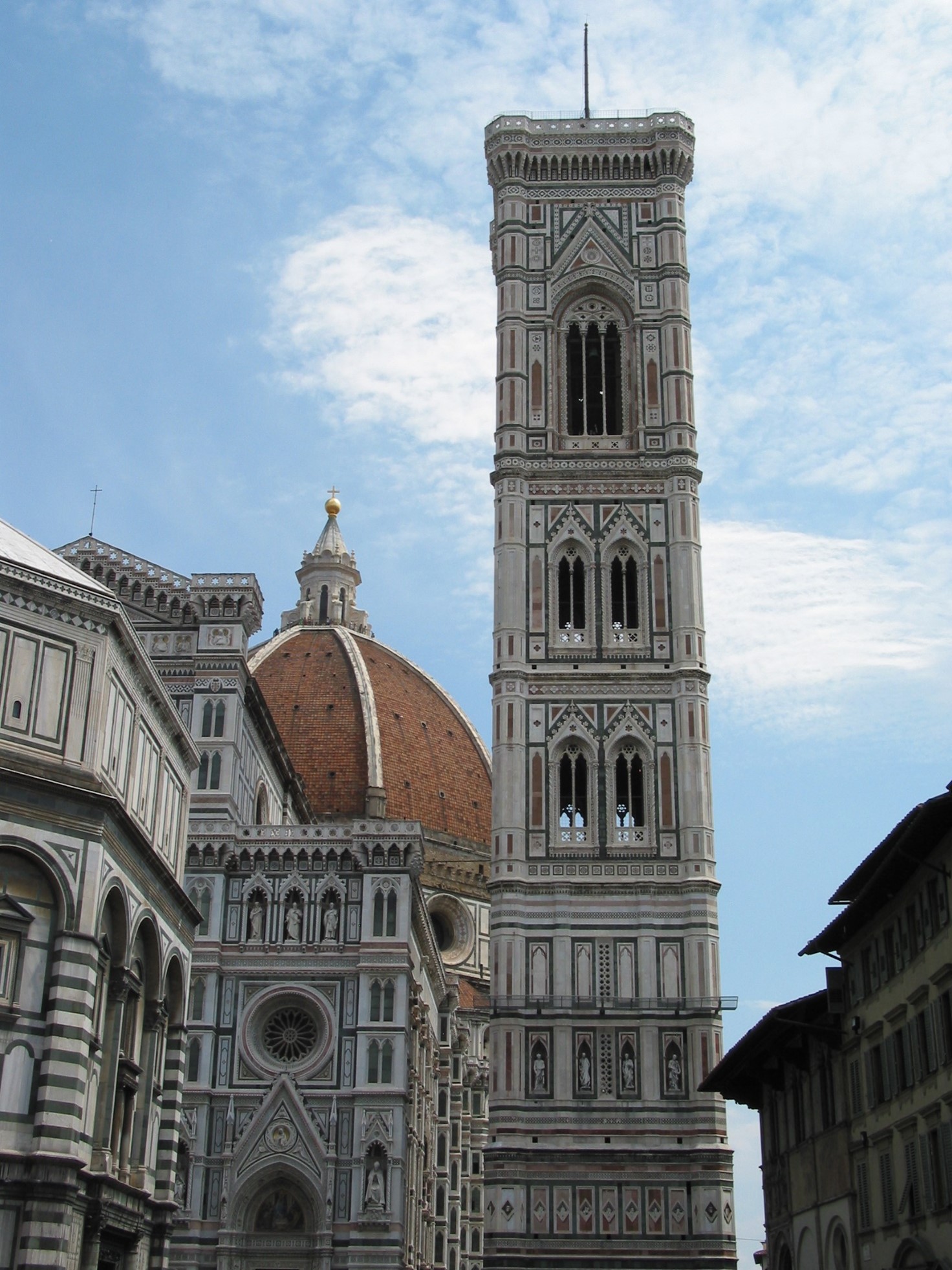
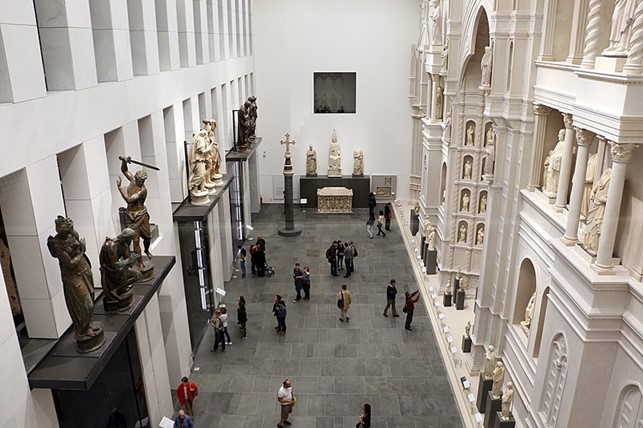
The Baptistry, consecrated in 1052 to Saint John (Giovanni) patron of Florence. Its doors, especially the one facing the duomo, by Ghiberti (crafted 1425-1452), are masterpieces of the Renaissance. Copies are now on site. Original ones are in the nearby Museo dell’Opera del Duomo.
The Cathedral, or Santa Maria del Fiore, consecrated in 1436 but finished 1471 with the dome, masterpiece by Filippo Brunelleschi which, with its 43 meters in diameter is still today the largest bricks-build dome built in the world. From the top you can enjoy a 360° view from the highest (116m) building in Florence.
The Belltower, or Campanile di Giotto, initiated by Arnolfo di Cambio in 1298 and completed by Giotto in 1359, an 85m Florentine gothic belltower, the second highest viewpoint in Florence.
The Museum of the Opera del Duomo, a museum hosting several original artworks. First of all the original doors of the Baptistry, which could not stay in their original place any longer. It also hosts several models on how the Cathedral was intended to be originally, the Façade being a late XIX century addition, the one planned originally never being completed.
Online Official Ticket Store for the whole area: https://duomo.firenze.it/en/home
The civic hearth of Florence, connected to the San Giovanni Square by Via Calzaiuoli, one of Florence main shopping street, it hosts (at least) three must-see.
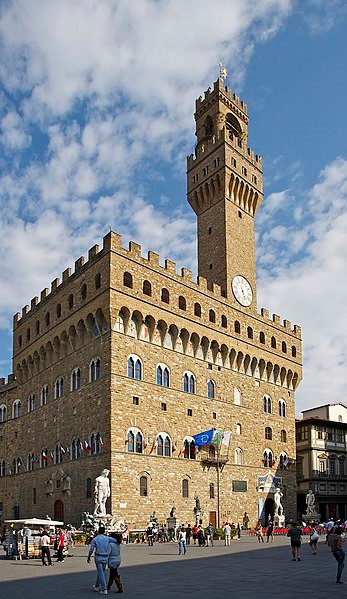
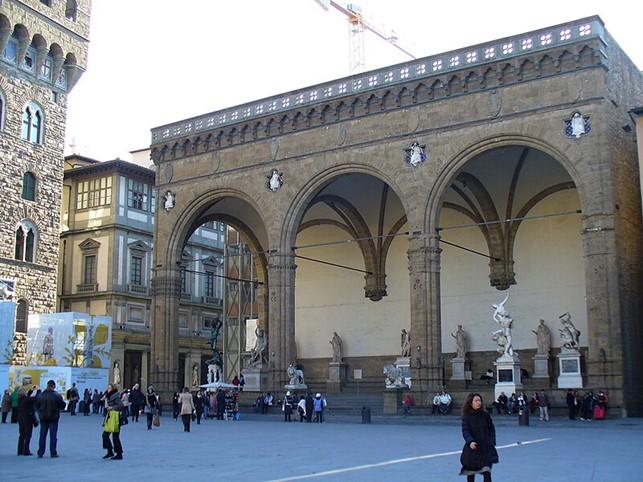
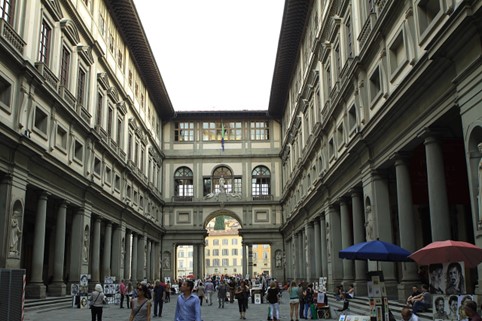
The City Hall, or Palazzo Vecchio, started in 1299 by Arnolfo di Cambio, it has since then been the see of the civic power and is nowadays the city hall. The main hall, or Salone dei Cinquecento is one of the largest and most lavishly decorated halls in Italy. At the main entrance of the Palace there is Michelangelo’s David (a copy – Original being in the Galleria dell’Accademia) and several other statues and a notable Neptune’s Fountain.
Online Official Ticket Store for Palazzo Vecchio and other museums: https://ticketsmuseums.comune.fi.it/1_museo-di-palazzo-vecchio/
Loggia de’ Lanzi, just on the right of Palazzo Vecchio there is an open-air, covered museum hosting more than ten statues, from roman era up to Renaissance, the most famous of which being the Perseus of Benvenuto Cellini (realized 1545-1554).
No ticket to access the area, but a limited number of people can access the area at the same time so there might be some waiting time.
Galleria degli Uffizi, by crossing the narrow gap between Palazzo Vecchio and the Loggia de' Lanzi you enter a long square ending on the Arno riverbanks surrounded by what once were the municipal offices and are now one of the most relevant art museums in the word (10th worldwide for the number of visitors in 2022). It hosts the largest collections of paintings by Raphael and Botticelli, many paintings by Giotto and Leonardo da Vinci and many others.
Official site and ticket office (also for Boboli Gardens and Palazzo Pitti): https://www.uffizi.it/en
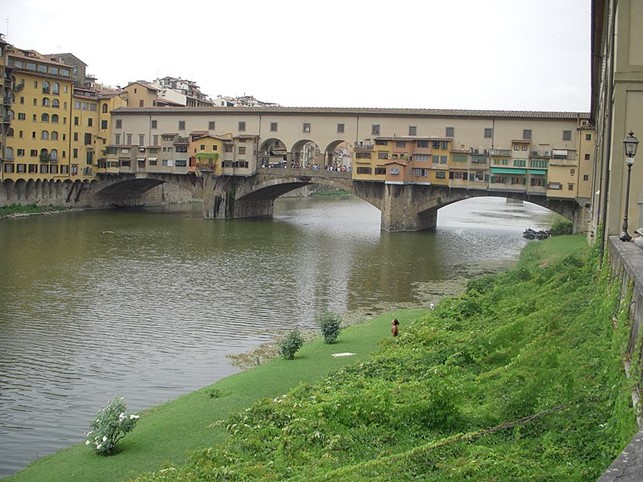
The only bridge in Florence surviving WWII, nearby the Uffizi, was inaugurated 1345 and, as it was custom at the time had buildings on it, still standing. Nearly all of these are goldsmith and jewelry shops. A corridor runs on the top of it, allowing safe transit of the Great Duke of Tuscany from Palazzo Vecchio, through the Uffizi, up to Pitti Palace on the south side of the city.
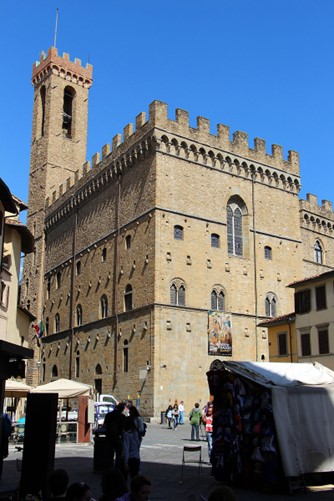
The Bargello, built starting in 1255, was the justice hall of Florence and now a museum with a great collection of statues by Renaissance masters.
Official site and ticket office (Also for the Cappelle Medicee and other museums): https://www.bargellomusei.beniculturali.it/musei/1/bargello/

A large, church completed 1461 but still lacking a façade, not far from the Cathedral, notable both for Brunelleschi’s Sagrestia Vecchia, one of the neatest creations of the early Renaissance, and for the Cappella dei Principi, a large octagonal building, with an imposing dome, built as a mausoleum for the Dukes of Tuscany.
Official site and ticket office: https://www.bargellomusei.beniculturali.it/musei/2/medicee/
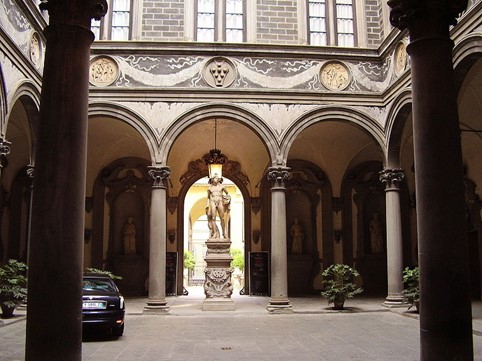
Ordered by Cosimo il Vecchio, progenitor of the Medici family. Lorenzo il Magnifico lived there. It hosts a large number of works of art and in particular, in its chapel, frescoes by Benozzo Gozzoli.
Official site and ticket office: https://www.palazzomediciriccardi.it/en/
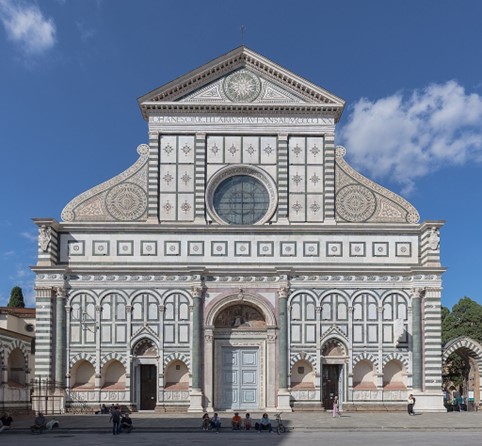
Consecrated in 1420, is one of Florence main Churches and nearby the train station ad our Conference venue. It hosts several works of art, and its façade too is one of the masterpieces of the Renaissance.
Official site and ticket office: https://ticketsmuseums.comune.fi.it/2_santa-maria-novella/#acquista
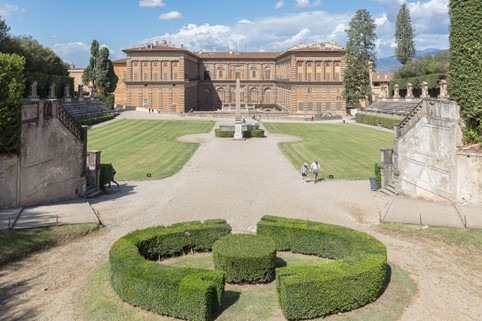
On the south of the Arno River, Pitti Palace (1845) is an imposing palace which has been the home of the Dukes first, then of the Great Dukes, of Tuscany, and eventually of the King of Italy in the brief years in which Florence has been Capital City of Italy (1865-1871). The palace is now a museum. The backing gardens too are worth a visit.
Official site and ticket office: https://www.uffizi.it/en
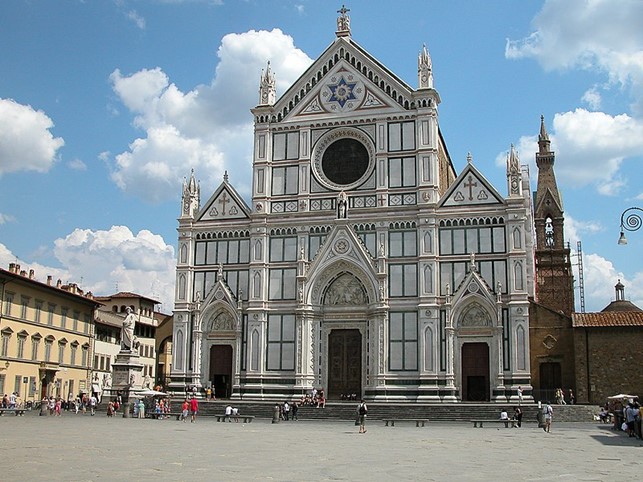
Santa Croce is one of the foremost gothic churches in Italy. It has been chosen as a burial place for those Italians who excelled, or for their cenotaphs. Here lies Leon Battista Alberti, Michelangelo Buonarroti, Galileo Galilei, Lorenzo Ghiberti, Niccolò Machiavelli, Gioacchino Rossini and many others.
Official site and ticket office: https://www.santacroceopera.it/en/organise-your-visit/

A must see for the Michelangelo’s enthusiasts. It hosts 7 of his statues (more than any other museum worldwide) and his most famous one, the David, symbol of Florence.
Official site and ticket office: https://www.galleriaaccademiafirenze.it/en/
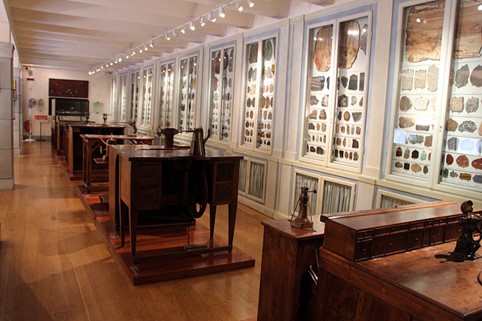
Created in 1588 as a workshop for stone inlay, or commesso fiorentino, a peculiar kind of mosaic with perfect matching within custom cut stones of different colors, it is now one of the top institutions for restoration in the world. Its museum offers an overview of the history of this institution and its creations.
Official site and ticket office: https://opificiodellepietredure.cultura.gov.it/museo/
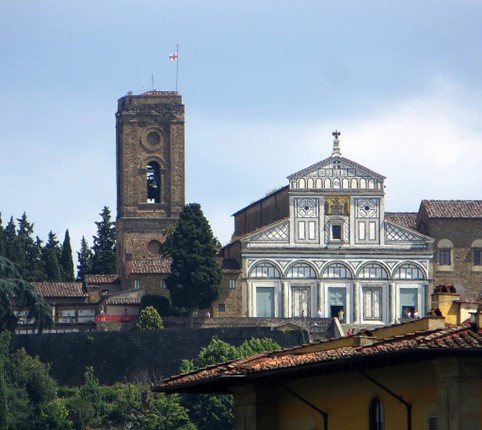
Among the oldest Churches in Florence (1018), is placed uphill on the south of the river Arno. Its elevated position, as it is for the nearby Piazzale Michelangelo, offers a splendid view all over Florence.
The Church and surrounding area are still owned by Benedectine monks, access is free opening hours can be found on their website (only in Italian) https://sanminiatoalmonte.it/contatti/ this is one of the few Churches where you can participate to a celebration in latin and with Gregorian chants.